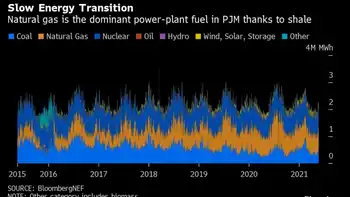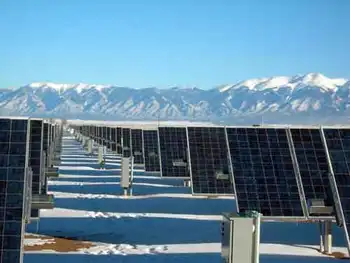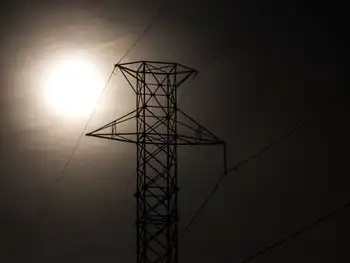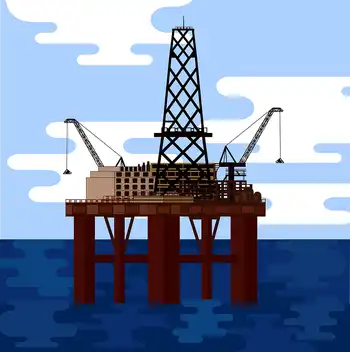Point Beach nuclear plant seeks to raise output
By Milwaukee Journal Sentinel
Protective Relay Training - Basic
Our customized live online or in‑person group training can be delivered to your staff at your location.

- Live Online
- 12 hours Instructor-led
- Group Training Available
A state moratorium on nuclear power bars utilities from building reactors in the state but does not prevent expansion of nuclear power through modifications to existing plants.
Wisconsin is home to three reactors, along Lake Michigan east and southeast of Green Bay. Together the reactors supplied about one-fifth of the state's electricity last year, according to federal data.
Under the proposal, the two-reactor, 1,023-megawatt plant near Manitowoc would boost its maximum power output by 170 megawatts, or enough to supply 85,000 homes.
Buying additional power from Point Beach could prove to be economical for customers, We Energies spokesman Brian Manthey said, particularly if Congress endorses a cap-and-trade plan designed to reduce emissions of carbon dioxide and other gases linked to global warming. We Energies buys power from the plant, which is operated by a subsidiary owned by FPL Group Inc. of Juno Beach, Fla.
Such a cap-and-trade system would make it more expensive for utilities to operate power plants that burn fossil fuels, particularly coal, and will increase demand for carbon-free power sources such as nuclear reactors and renewable energy systems.
No decision has been made on whether to buy the extra power, but We Energies has a right of first refusal to buy that power. The Milwaukee utility already buys all of the power generated by Point Beach, under terms of the $1 billion sale of the plant to NextEra Energy Resources, completed in 2007.
"As we look at it today, this could be a potentially valuable option," said Manthey, noting that We Energies locked in power prices several years ago for any additional power that the plant would generate.
NextEra Energy, a unit of FPL Group that employs 650 people at Point Beach, initially had hoped to target the power increase to take place in 2010 and 2011, but the Nuclear Regulatory Commission review process for the proposal will take longer than that, said Viktoria Mitlyng, an agency spokeswoman.
In the power boost — known in the nuclear industry as an uprate — significant modifications to a plant might be required to handle increased pressure from operating the plant at a maximum level.
In a power boost, reactors use more fuel, which in turn produces more heat and more steam, which then produces more electricity.
As a result, regulators must ensure that the plant systems and components, such as pipes, valves, transformers and generators, can handle higher pressure and increased steam, Mitlyng said.
"It usually requires a number of modifications to equipment to make sure it can withstand the higher pressure of steam as it's going through the turbine and higher vibrations on certain equipment," Mitlyng said. That could entail reinforcing joints and strengthening piping and other system upgrades.
No cost estimate is available for the project, but FPL Group says it's planning to spend $1.8 billion for a power boost at two Florida power plants. Those power boosts would be more than twice as big as the power upgrade planned at Point Beach.
Several large power boosts have been approved at reactors around the country, including for a reactor with the same design as Point Beach in New York, NextEra said in a regulatory filing.
Wisconsin's other nuclear reactor, Kewaunee, southeast of Green Bay, is not seeking to expand its output at this time, said Mark Kanz, a spokesman for Dominion Resources Inc., the Virginia-based operator of Kewaunee.
Dominion is seeking to extend the life of that reactor by 20 years, a proposal that the Nuclear Regulatory Commission is expected to rule on by late 2010. A public hearing on the proposal is expected to take place in January, Kanz said.
The Point Beach plant received its license renewal several years ago and will be permitted to run until the 2030s. Kewaunee is now seeking a similar 20-year extension, Kanz said.
Both plants are operating well, based on reports from safety inspection by nuclear regulators.
For several years, Point Beach faced intensive extra scrutiny from regulators because of a series of safety concerns detected by regulators. But for the past few years, the plant has operated without incident and is no longer subject to extra review, Mitlyng said.
The Nuclear Regulatory Commission has not begun its review process of NextEra's proposal to boost the power output at Point Beach because it is reviewing a separate issue with FPL, she said. That issue involves a proposed technical change to the plant's operating license.











